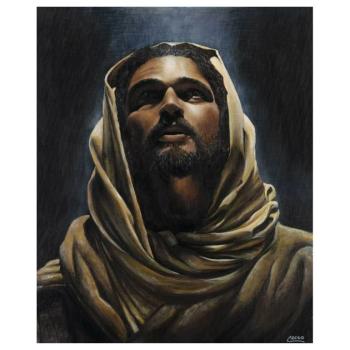On a technical level, both sound and cheaper 16mm film stock were introduced, with the occasional use of color. During this period the Church nurtured a tremendous private film distribution network that sidestepped commercial theaters, not only allowing Mormon filmmakers like future Church President Gordon B. Hinckley to make works that otherwise would not have existed, but creating a culture of cinematic awareness among Latter-day Saints, including hundreds of teenage boys trained by the Church to work as film distributors and exhibitors.
The Third Wave (1953-1974):
Judge Whitaker and the Classical Era
The newly created BYU Motion Picture Studio, headed during this entire period by a former Disney animator named "Judge" Wetzel Whitaker, started the production of hundreds of Church films, generally on 16mm film stock, distributed privately throughout the Church for multiple purposes and audiences. Occasionally some reached a general audience, as with the screening of Man's Search for Happiness at the 1964 World's Fair in New York and the university's secular films on educational topics, but the best-known titles remain those like Windows of Heaven that dealt with religious themes (in this case the practice of tithing). Independently produced Mormon feature films, which had been nonexistent since 1931, were attempted but primarily failed, and, as Hollywood standards relaxed with the end of the self-censoring Production Code, mainstream films returned to depicting Mormons as objects of curiosity.
The Fourth Wave (1974-2000):
The Mass Media Era
The advent of video reduced costs and provided additional distribution outlets, allowing many more Latter-day Saints to complete productions within the video and television marketplace and causing the total quantity of independent works to increase dramatically. Productions included short films, documentaries, cartoons, fictional features, children's films, videotaped plays, and numerous amateur productions recording Church activities and the like.
The Church also enlarged the scope of its work by creating other production entities beyond BYU, often shooting on 35mm or even 70mm stock, and distributing its work through a variety of channels including satellite broadcasts, cable and broadcast television, VHS cassettes, and destination cinemas at Church-owned visitors' centers. Depictions of Mormons in mainstream film once again returned to sensationalist representations, whether on video, like Ed Decker's sensationalistic The Godmakers (1983), or in theaters, like Trey Parker and Matt Stone's campy Orgazmo (1997). Large numbers of Latter-day Saints, like directors Don Bluth and Neil LaBute, were working in the mainstream industry.
The Fifth Wave (2000 -- present):
Cultural Maturity
A succinct name for the current period is hard to come by, given the rapidly evolving nature of both Mormon film and the entire motion picture industry in the face of online video and new distribution methods. It remains to be seen exactly how Mormon film will evolve or how quickly a "Sixth Wave" will emerge. Still, some themes have been consistent over the past ten years.
Independent Mormon productions released on 35mm film in commercial theaters to a paying public have established a niche market within American Mormonism. Foremost among these filmmakers was Richard Dutcher, whose trilogy of films -- God's Army (2000), Brigham City (2001), and States of Grace (2005) -- largely defined the genre and galvanized many critics before he publicly left the Church in 2007.
Since 2005 there has been a decrease in the number of films released theatrically, but video and DVD distribution of institutional and independent Mormon film are expanding, while internet and digital film suggest new formats and modes of distribution, as with the 2009 web series The Book of Jer3miah, a serial mystery/thriller produced by Jeff Parkin at Brigham Young University. The aforementioned LDS Film Festival now coincides annually with the Sundance Film Festival. Institutional, independent, and mainstream treatments of Mormon themes, as in the HBO miniseries adaptation of Tony Kushner's Angels in America (2003) and the same station's dramatic series Big Love (begun 2006) about a polygamous family in modern Salt Lake City, have begun treating Mormonism with more complexity.
The Church is increasing its use of viral video (as on Mormon.org and the "Mormon Messages" YouTube channel), and its distribution entities like BYUTV, available in millions of homes in many countries including China, are increasing their reach. Across the United States and beyond, Latter-day Saints are starting to sense the emergence and importance of their own film tradition, suggesting the beginning of a culturally identifiable but institutionally independent Mormon cinema.
Other websites of interest:
Fit for the Kingdom -- Short documentary films about Mormons
MormonWebTV -- Short Mormon videos
LDS Filmmakers' Network -- A social networking site for Mormon filmmakers
Toward an LDS Cinema -- A well-informed blog about Mormon cinema




